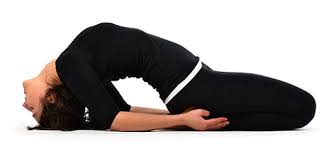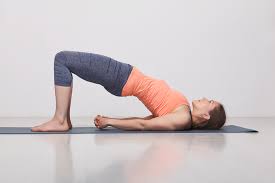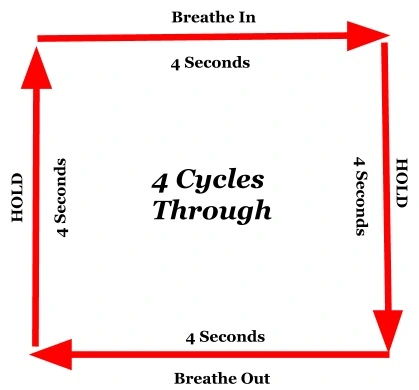Lunges
The lunge is a well-liked and adaptable lower-body training exercise. Numerous muscles are used in a single motion, and it has various advantages. Different muscles or their sections are emphasized by varying your technique.
You can shape and build practically every muscle in your lower body with lunges, making them a strong workout. Lunges are lower body exercises that can be incorporated into any strength training or circuit training program if you learn how to perform them properly.
Table of Contents
Which muscles worked in a lunge?
Many muscles are used to both move and stabilize the body during a lunge. They consist of
- Quadriceps
- gluteal muscles
- The hamstrings
- The gastrocnemius and soleus calves
- Across the abdominis
- The obliques
- Multifidus
- The erector spinae
The lower body muscles, particularly the quadriceps, glutes, and hamstrings, contract both eccentrically (lengthening) and concentrically (shortening) during the lunge.
The forward lunge is the simplest form of lunge. It consists of taking a step forward, dropping your body towards the floor, and then stepping back up to where you were before. Most folks will use this form when they claim they’re “doing lunges.”
The impact of your foot landing must be controlled by your leg muscles at the start of the activity. Then, in what is referred to as the eccentric portion of the action, you further lower your body to the ground.
In order to regulate the movement during this phase, your muscles are extended under strain. The quadriceps slow down your landing and manage the descent by coordinating with the hamstrings and gluteals.
Studies have indicated that the glute and hamstring muscles in the front leg are working a little harder than those in the rear, even though both muscles operate eccentrically.
A dynamic pushback to the starting position is part of the step-back portion of the forward lunge. To push the body upright, the same muscles tense up. The contraction of muscles to move the body is known as the concentric phase of movement.
The effort that the body must put out during the eccentric period is one of the reasons lunges are so successful. Studies have indicated that when comparing hypertrophy and muscle size, eccentric muscle contraction is more efficient than concentric muscle contraction.
Benefits Of Lunges
- Lunges provide several advantages. Most significantly, they simultaneously engage many lower-body muscle groups. They are therefore a crucial exercise in many recovery and injury prevention regimens, including those that aim to avoid anterior cruciate ligament (ACL) injuries.
- Given the strain needed by the lead leg relative to the rear, lunges are regarded as a unilateral exercise.
- This enables you to enhance strength asymmetries more effectively than, say, squats. Lunges also test and strengthen your unilateral balance and stability.
- Due to its comparable mechanics to running, the lunge is an excellent workout for runners. The movements of the step out to landing resemble those of a running stride but without the strong ground response of the sensations of the body when running.
- As a result, the lunge is an excellent exercise for strengthening the muscles that will be used to withstand the force of more intense motions. In a previous study, lunges, particularly the walking or leaping varieties, were proven to be highly beneficial for training young athletes.
- Additionally, during the lunge, the opposite leg muscles are exercised simultaneously. A resistance program may become more effective as a result of this.
- Including exercises that train numerous joints simultaneously is preferable if you only have time for a small number of them.
- Additionally, lunges help burn calories, build lean muscle, and increase metabolism, making them effective for weight loss and overall fitness.
How to do a lunge?
- Start by placing your feet hip-width apart while standing.
- Take a step that is longer than a walking stride, placing one leg in front of your chest and the other behind it. When your foot touches the ground, it should land level and stay that way. Your back heel will rise off the floor.
- Lower yourself with your knees bent to around a 90-degree angle. Keep your core active and your trunk erect.
- Then, push off from your front leg with an effort to go back to where you started.
Lunges Video
Variation in Performing Lunges
Because there are so many versions of the lunge, beginners may make it easier for themselves, while more experienced exercisers can make it more difficult.
- Assisted Lunge
- Half Lunge
- Front Foot Elevated Lunge
- Dumbbell Lunge
- Barbell Lunge
- Forward Lunge
- Forward Lunge With Reach
- Side Lunge
- Lunge Deadlift
Assisted Lunge: For improved balance, you grip a stationary object, such as a chair or wall, throughout this lunge variant. You may now concentrate on form instead of worrying about tilting to one side or the other. As you lower and bring yourself back up, rest the palm of your hand on the item for stability.
Half Lunge: Because you stop well before your front knee is at a 90-degree angle and only descend half as far as you would in a typical lunge, this version has a narrower range of motion. You can maintain proper form without putting as much strain on your knee joints by doing this.
Front Foot Elevated Lunge: If you get knee pain from ordinary lunges, consider placing your front foot on a step or tiny platform, lowering your body until your front thigh is parallel to the floor, and making sure your entire front foot is on the same surface.
Dumbbell Lunge: Holding weights during the lunge can increase its intensity. The basic steps of a dumbbell lunge are the same, except instead of placing your arms on your hips, they dangle at your sides, and you carry a weight in each hand.
Barbell Lunge: Because a barbell distributes weight more uniformly throughout the body, you may utilize larger weights when lunging. A strong sense of balance is necessary before attempting this version. Do these lunges with the barbell over the top of your shoulders.
Forward Lunge: Start with your feet slightly apart and stand up straight, then take a big stride forward in this form of the moving lunge. Bring your front thigh parallel to the floor by lowering your torso. The front knee remains over the toes. Then, to go back to standing, push up at your front heel.
As you get better at this lunge, you may also perform it with weights in each hand. This version should only be tried after you have mastered a basic lunge since it needs greater balance.
Forward Lunge With Reach: This exercise will test your core strength and balance and is excellent for the whole body. Put yourself in a forward lunge stance and stretch your arms fully forward, as though you were aiming your fingertips at a location a few feet ahead of you. Once you’re upright again, put your hands back on your hips.
Side Lunge: Along with the hips and glutes, the side lunge highlights the inner thighs. Step out to the right, keeping your feet pointing ahead, after standing with them together.
Lower your body while bending your right knee, being careful not to let your front knee go past your toes. Step back in and straighten your right leg to go back to where you were before.
Lunge Deadlift: The front leg’s hamstrings and glutes are worked more intensely in this intermediate workout. As you advance into a lunge, move the dumbbells towards your front ankle and tilt forward at the hips. As you bring your front leg back, raise your body to an upright position and stand up.
Precaution While Performing Lunges
- Ask your physician or physical therapist if you should avoid or modify the lunge if you have a knee injury or ailment. (Remember that not everyone will benefit from even little adjustments.) You should only perform static lunges throughout the third trimester of pregnancy.
- The flexibility of your hip flexors and quadriceps is another thing to consider. Your form may be affected if these places are tight, and you could even get a tugging feeling on your kneecap.
- Reduce your range of motion and/or stretch your quadriceps before lunging to avoid this. Stop the lunge exercise right away if you experience any pain.
- A simple lunge is a good starting exercise for beginners. They can perform one or two sets of 10–16 repetitions, increasing the weight as they feel comfortable. In each session, intermediate and advanced exercisers may execute one to three sets of 10 to 16 repetitions of one or more lunge variants.
Summary
One of the best exercises for strengthening the muscles in the lower body is the lunge. It comes in a variety of forms to target the hamstrings, quadriceps, glutes, and other muscles. Regardless of your level of experience, you may scale the exercise using the variants.
FAQ’s
An exercise for the lower body, lunges help to build and tone the muscles in your calves, quadriceps, hamstrings, glutes, and core. Balance, posture, and coordination can all be improved by them.
Instead of squats, try lunges to increase your endurance, agility, balance, and coordination. Because you may add more weight to the squat, the action focuses more on increasing your bulk and power, whereas the lunge focuses on stability and balance.
In essence, lunging is a method of teaching horses.
Lunging helps improve the horse’s gaits and establish balance and rhythm. It also acts as a loosener before riding. Ayden also offers tips on how to ensure proper usage of the whip.
In addition to indirectly engaging your core muscles, which help tone your abdominal region, lunges can also help reduce belly fat by aiding in overall weight loss because they work large lower body muscle groups, which raise metabolism and burn calories when done frequently.
An athlete who has a limited ankle range of motion may not be able to complete the exercise properly, particularly at the bottom of the lunge. Because it must “pick up the slack” for restricted ankle movement, this might result in excessive force at the knee. Because of this, the lunge may cause pain and suffering.
References:
- Patel, D., & Patel, D. (2024, October 3). How to do lunges Correctly: Benefits, variations, muscle worked. Samarpan Physiotherapy Clinic. https://samarpanphysioclinic.com/lunges/
- Mpt, T. E. P. (2023, April 14). What muscles do lunges work? Healthline. https://www.healthline.com/health/fitness-exercise/lunges-muscles-worked
- Cpt, P. W. (2024, June 13). How to do lunges: proper form, variations, and common mistakes. Verywell Fit. https://www.verywellfit.com/how-to-lunge-variations-modifications-and-mistakes-1231320







